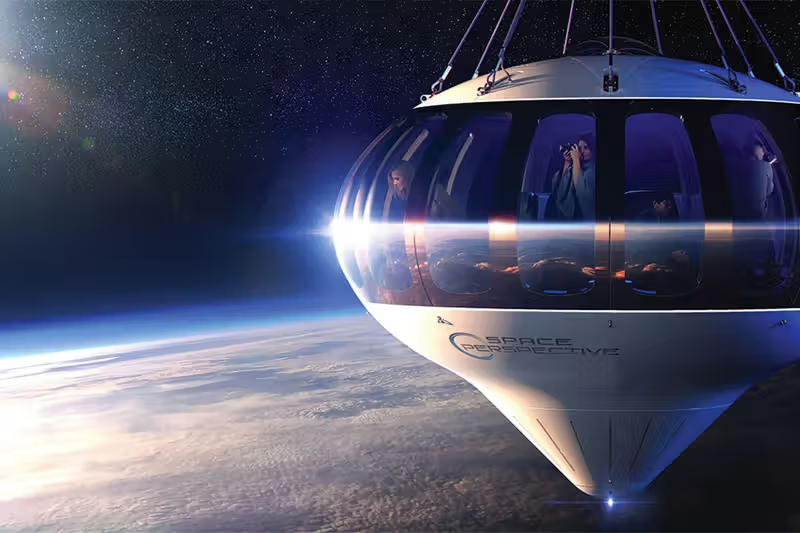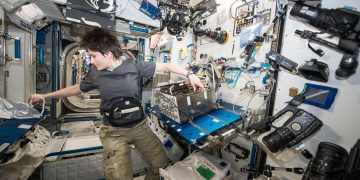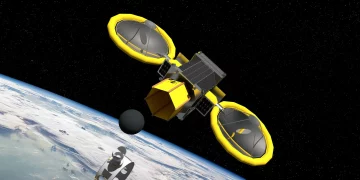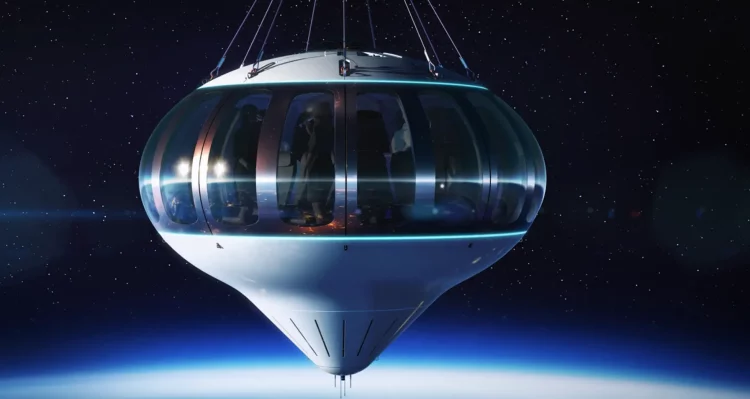Introduction
Space exploration has traditionally been the domain of government agencies like NASA, Roscosmos, and the European Space Agency (ESA). However, in recent years, private companies have started to play an increasingly significant role in the space industry. With companies like SpaceX, Blue Origin, and Virgin Galactic making headlines, the once-remote world of space exploration is now opening up to commercial enterprises.
The entrance of private companies into space exploration holds the promise of significant technological advancements, cost reductions, and an accelerated timeline for space missions. However, it also brings a host of challenges that need to be addressed if we are to build a sustainable, efficient, and secure space industry. This article explores the technological innovations that private enterprises could bring to space exploration, as well as the challenges they must overcome to succeed in this new frontier.
1. Technological Innovations Brought by Private Enterprises
A. Reusable Rocket Technology
One of the most groundbreaking innovations in space exploration over the past decade has been the development of reusable rocket technology, and this is primarily credited to private companies, particularly SpaceX.
- SpaceX’s Falcon Rockets: SpaceX revolutionized the space industry by developing the Falcon 9 and Falcon Heavy rockets, which are designed to be reused multiple times. This innovation dramatically reduces the cost of space launches, as rockets no longer have to be discarded after every mission. SpaceX’s successful landing and reflight of Falcon 9 rockets has proven that reusability is not just a theoretical possibility but a practical reality.
- Blue Origin’s New Shepard: Similarly, Jeff Bezos’ Blue Origin has developed the New Shepard suborbital rocket system, which is also designed to be reusable. While Blue Origin’s focus has been primarily on space tourism and suborbital flights, the technology it has developed will likely contribute to the broader space exploration ecosystem, especially as the company moves toward more ambitious space missions.
- Cost Reductions and Increased Accessibility: The reusability of rockets drastically reduces the cost of getting payloads into orbit, making space access more affordable. Lower launch costs open up space exploration to a broader range of players, including private enterprises, research organizations, and even universities. This innovation is one of the key drivers behind the growing interest in commercial space ventures.
B. Autonomous Spacecraft and Advanced Propulsion Systems
The private space sector is also driving advancements in spacecraft autonomy and propulsion technology, areas critical for long-duration space missions.
- Autonomous Spacecraft: SpaceX, for example, has developed the Crew Dragon spacecraft, which is capable of autonomous docking with the International Space Station (ISS). This technology will be critical as humanity moves toward more complex missions, such as lunar exploration or even manned missions to Mars. The ability to operate spacecraft autonomously reduces the need for continuous human intervention, making long-duration space travel more feasible.
- Advanced Propulsion Systems: Private companies are also working on developing advanced propulsion systems that could enable faster and more efficient space travel. For instance, SpaceX’s development of the Raptor engine, which uses liquid methane and liquid oxygen (LOX), promises higher efficiency compared to traditional rocket engines. Blue Origin is also investing in future propulsion technologies, such as the BE-7 engine, designed for lunar landers. These propulsion systems are critical for future exploration of distant destinations like the Moon, Mars, and beyond.
C. Space Tourism and Commercial Space Travel
One of the most high-profile aspects of private sector involvement in space is the burgeoning space tourism industry.
- Suborbital Flights: Virgin Galactic, with its SpaceShipTwo spacecraft, is pioneering the commercial space tourism market by offering suborbital flights. These flights, although brief, provide paying customers with the opportunity to experience weightlessness and see Earth from space. While the technology is still in its early stages, the success of Virgin Galactic’s flights marks the beginning of a new era in commercial space travel.
- Future Space Tourism: As private companies continue to innovate, space tourism could evolve into a more immersive and extended experience. Companies like SpaceX have already proposed plans for orbital space tourism, including private missions to the ISS, while Blue Origin is working on building the infrastructure needed to support long-duration missions and eventual space hotels.
D. Space Infrastructure Development
Another exciting area of private enterprise in space exploration is the development of space infrastructure. This includes the construction of space stations, lunar bases, and even asteroid mining.
- Lunar and Mars Bases: Private companies, including SpaceX and Blue Origin, have shown significant interest in developing technologies that would support human habitation on the Moon and Mars. SpaceX’s Starship, designed to transport humans to Mars, is one example of how private companies are tackling the challenges of long-term space habitation. Blue Origin has also proposed the idea of creating a “blue moon” base, which would serve as a hub for future lunar exploration and resource extraction.
- Space Habitats and Stations: While NASA has the ISS as a platform for long-term research in low Earth orbit, private companies are looking to build their own commercial space stations. For instance, Axiom Space plans to construct a private space station to host research, space tourism, and commercial activities. Such developments could drastically increase human activity in space, making the concept of living and working in orbit a reality for more people.
2. Challenges Faced by Private Enterprises in Space
Despite the many innovations private companies have brought to the table, there are significant challenges that they will need to address in order to succeed in the highly complex and dangerous field of space exploration.
A. Regulatory and Legal Challenges
Space exploration is governed by international treaties, national laws, and a complex regulatory framework. Private companies must navigate these regulations, which are designed to ensure the safe and peaceful use of outer space.
- International Regulations: The Outer Space Treaty of 1967, signed by over 100 nations, prohibits the placement of nuclear weapons in space and limits the use of space to peaceful purposes. It also prohibits any government from claiming sovereignty over celestial bodies. Private companies must adhere to these international guidelines, even as they venture into space for commercial purposes.
- National Regulations: Different countries have their own regulatory bodies for overseeing space activities. For instance, the U.S. Federal Aviation Administration (FAA) regulates commercial spaceflight in the United States, while the European Space Agency (ESA) oversees European space ventures. Private companies need to work within these frameworks and ensure that they comply with safety and environmental standards.
- Licensing and Liability: Private companies must secure licenses for space missions, including those related to launches, payloads, and satellite operations. They must also address issues related to liability in case of accidents, such as crashes or space debris.
B. Safety and Risk Management
Space exploration is an inherently risky endeavor, and private companies must develop robust safety measures to mitigate the risks associated with space travel.
- Crew Safety: Human space travel carries significant risks, and ensuring the safety of astronauts and space tourists is paramount. Companies like SpaceX and Blue Origin must develop technologies that ensure safe launches, landings, and operations in space. This includes rigorous testing of spacecraft, life support systems, and astronaut safety protocols.
- Space Debris: As more private companies launch satellites, the issue of space debris becomes an increasingly critical concern. Space debris can collide with operational satellites and spacecraft, posing a serious threat to both commercial and governmental missions. Companies must work on developing technologies to track, manage, and mitigate space debris, ensuring the long-term sustainability of space exploration.

C. Financial Sustainability
Space missions, particularly interplanetary or deep-space missions, require enormous amounts of capital. While private companies like SpaceX and Blue Origin have secured significant funding, maintaining financial sustainability is a major challenge.
- Cost of Innovation: Developing and testing cutting-edge technologies, such as reusable rockets and advanced propulsion systems, requires substantial investment. Private companies need to continuously secure funding and ensure that they can sustain operations while navigating the uncertainties of the space industry.
- Market Viability: The commercial space market, while growing, is still in its infancy. Space tourism, for example, remains a niche market, and only a small number of people can afford the cost of a trip to space. The market for space-related products and services, such as satellite launches and space infrastructure, will need to expand for private companies to achieve long-term profitability.
D. Technical Challenges in Deep Space Exploration
While private companies have made remarkable progress in low Earth orbit (LEO) missions, deep space exploration presents a host of technical challenges.
- Long-Duration Space Travel: Missions to the Moon, Mars, and beyond require the development of technologies that can sustain human life for extended periods. This includes radiation shielding, closed-loop life support systems, and methods for producing food and water in space. Developing these technologies will be crucial for private companies aiming to conduct long-duration space missions.
- Lunar and Mars Exploration: Establishing permanent bases on the Moon or Mars involves overcoming numerous technical hurdles, from the creation of habitats to the extraction of local resources (a concept known as in-situ resource utilization). Private companies must develop sustainable technologies that can support human life on other planets while reducing dependence on Earth-based resources.
3. Conclusion: A New Era of Space Exploration
The entry of private companies into the space industry has undoubtedly accelerated technological innovation and opened up new possibilities for space exploration. From reusable rockets and advanced propulsion systems to space tourism and infrastructure development, private enterprises are pushing the boundaries of what is possible in space. However, these companies also face significant challenges, including regulatory hurdles, safety concerns, financial sustainability, and the complexities of deep space exploration.
As these companies continue to develop new technologies and address the challenges of space exploration, they will play a key role in shaping the future of the space industry. The collaboration between government agencies and private companies could lead to a more sustainable, affordable, and accessible space frontier—one that could eventually allow humanity to explore the stars and even establish a permanent presence beyond Earth.


















































Discussion about this post